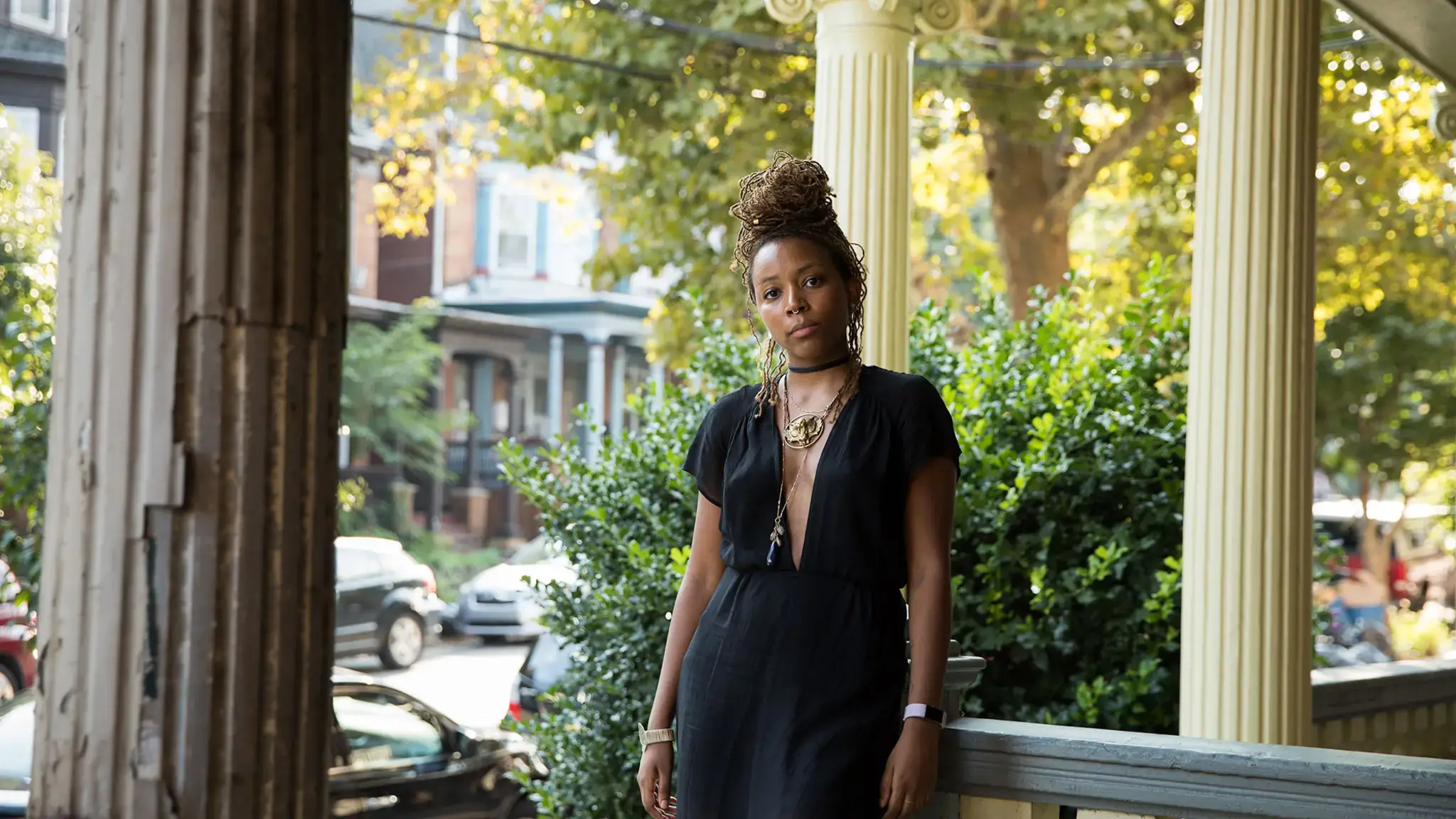Our “Pew Fellow of the Week” series focuses on the artistic lives of our Pew Fellows: their aspirations, influences, and creative challenges.
This week, we speak to Tayarisha Poe (2017), whocreates complex portraits of young people of color in her multisensory work that blends film, photography, and prose across media platforms. Poe’s forthcoming debut feature film, Selah and the Spades, began as an online series of photographs, short films, prose, and web design, telling the story of a charismatic black teenager in a fictional Pennsylvania town. The project marked Poe as one of Filmmaker Magazine’s “25 New Faces of Independent Film” in 2015 and was further developed recently at the Sundance Screenwriter's Lab. Poe is a 2016 Knight Foundation Sundance Fellow and has been awarded grants from the Cinereach Foundation and Leeway Foundation.
How did you become an artist? Is there a particular experience that drove you to this choice?
Though there was a period of time when I was 12 years old and convinced I was destined to go to Harvard and then Harvard Law and become a lawyer, I’m pretty sure, in some form or another, I’ve always been an artist. There was no choosing involved in it. I grew up surrounded by people (my family) who communicated and embodied an idea that art is living, and to be an artist is to live thoroughly and honestly and creatively. To them, to us, there wasn’t a risk in being an artist “professionally” so long as you were trying your absolute best doing whatever you were choosing to do. Since I’m the second youngest in a very large family, I’ve been able to see my brothers and parents and loved ones go down vastly different paths and never lose that thread of creativity, that artistic bone of living thoroughly and honestly, no matter how they make money. Once I learned that telling stories was, in a way, getting away with lying for a living, I was sold.
What was the first work of art that really mattered to you? Did it influence your approach to your work?
The Westing Game by Ellen Raskin. It’s the first book I remember absolutely terrifying me, thrilling me, playing out from start to finish like a film in my head. I lost my treasured copy that’d been passed down by my brothers one day in the book section of a Sam’s Club, but now I have three copies in case I need to pass them out to any kid who needs a life-changing experience someday. That book taught me at a very young age that stories are inherently multi-sensory, and thus, when I write or craft photos or films, I aim for that multi-sensory experience.
What drives your work? What stories are important for you to tell?
I make stories for the 14-year-old Tayarisha who wished she were anyone but who she was. I make stories for that Tayarisha to fall in love with all that she is at 14 and all that she might be in the future. That drives me. The inner 14 year old.
Can you expand on this sentiment? What motivates you to tap into your internal youth and to keep going as an artist?
I think there’s something tragic that happens to us all as we get older: that moment when we realize people are looking at us with expectations about who we are and what we’re capable of. That moment kills our exploration in varying amounts, and much of life is then spent either breaking free of those expectations or living up to them. So when I speak about the internal youth I’m speaking about the person that existed before we realized we were being watched by the world. That person never dies, it just grows quieter. Letting that person live and speak and breathe and run and shout inside of us is one of the kindest things we can do for ourselves. It makes us stronger, more blunt, fiery, honest. It’s exhausting, but it’s necessary. Sometimes.
If you could collaborate with anyone alive today, who would it be?
I want to make a Coffee and Cigarettes type project of several mediums with any black filmmaker who wants to be a part of it. That’s the dream. Soon come.
What is perfection to you, in the context of your work?
When my parents are excited about something I’ve created, they have this particular look on their faces that encapsulates everything I feel inside about art, about storytelling: they get this look of pure joy and a glint in their eyes and smiles so large that their cheeks are like small apples, and they talk over each other about the details of whatever it is. That’s when I know I’ve done well. Because my parents have good taste, and my parents are honest, and when I see that internal youth displayed on their faces it pushes me to keep creating.









